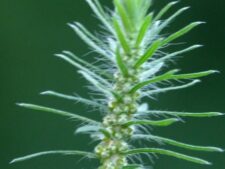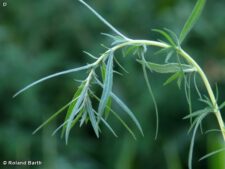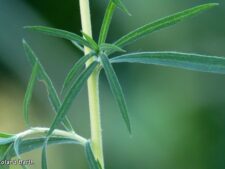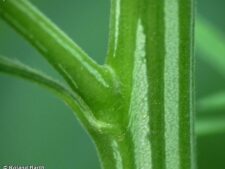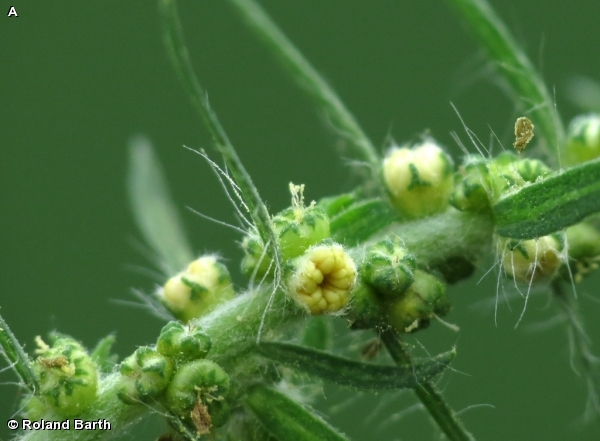
SUMMER CYPRESS
Bassia scoparia
GOOSEFOOT FAMILY (Chenopodiaceae)
 Identification
Identification
- Flowering time - July, August, September, October
- Uncommon in disturbed areas at FF & NW
- Hairy spikes of tiny yellow flowers
- Narrow, alternate leaves
- No spines on leaf tips; similar Russian Thistles (Salsola spp) have spiny leaf tips
This bushy annual weed actually has tiny green flowers. Flowers have no petals; what is seen with the naked eye are the yellow stamens (A). That’s why we include them under the yellow flower section. These flowers are arranged in terminal clusters associated with lots of long hairs (A,B). The narrow, alternate leaves have margins varying from smooth and hairless to very hairy (B,C,D). The stems are yellow above and green with lighter stripes below (E,F). Later in the season the stems may turn to red or purple.
This weedy species grows on disturbed ground; in its bushy habit along the RR Tracks at Childs Hollow in Fontenelle Forest, and on the floodplain among the other weeds in 2012 (after the flood in 2011) in a more upright habit. Abundance varies from year to year; it flourished after the major disturbance created by the floods, but is hard to find in ‘normal’ years.
Also known by the common name Kochia, its previous scientific name, until it was recently changed to Bassia.
Summer Cypress is often a troublesome weed in agricultural fields and rangeland. Many plants have developed resistance to common herbicides. At maturity, the dried plant often breaks off to form “tumbleweeds”.
Cultivars of Kochia, known for their bright orange and red fall colors, are marketed as ornamentals under names like Burningbush and Mexican Firebush.
The content of NatureSearch is provided by dedicated volunteer Naturalists of Fontenelle Forest who strive to provide the most accurate information available. Contributors of the images retain their copyrights. The point of contact for this page is: Roland Barth.

